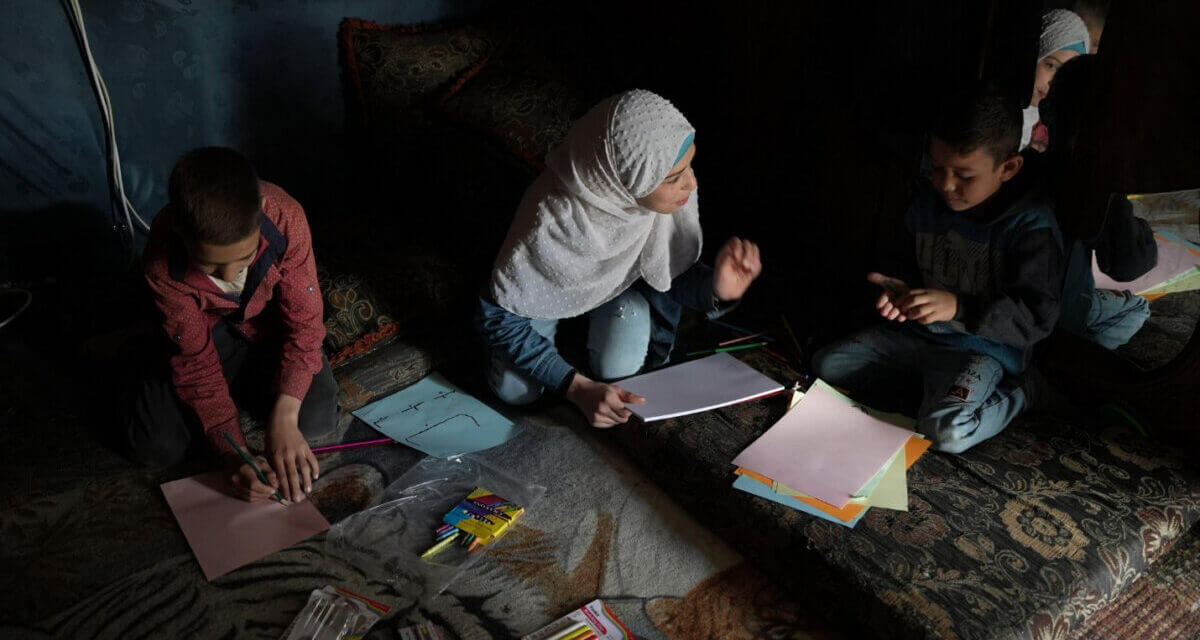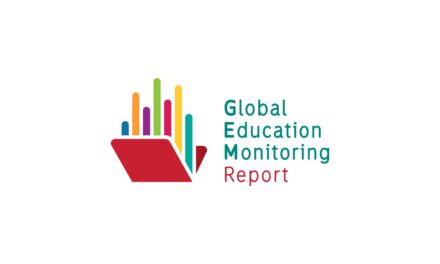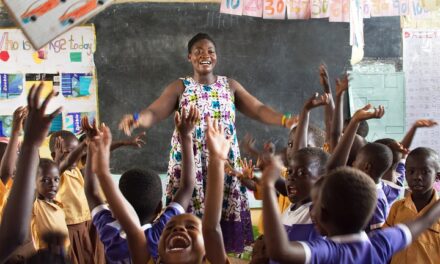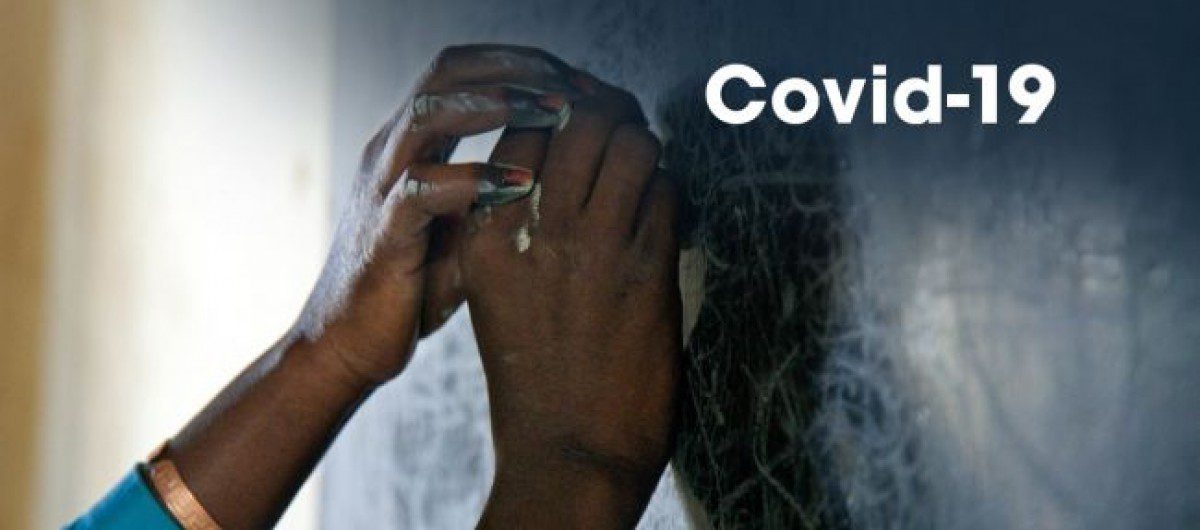This blog was written by Dr Kate Schwartz, Global TIES for Children, New York University.
The last few decades have seen immense gains in global recognition of the critical importance of pre-primary/early childhood education (ECE). Despite this, the goal of universal ECE – as we have traditionally defined it – has remained aspirational: with little progress since 2015 toward the universal quality ECE called for in SDG 4.2. Partly, this is due to financial constraints and continued limited investment in ECE. But partly, it is because there are contexts in which setting up in-person pre-school and kindergarten classrooms is not viable.
Reasons why in-person ECE may not be feasible include geographical barriers (e.g. areas in which people live too far apart from offered in-person ECE or from other families with whom to set up ECE with) as well as more acute crises (e.g, COVID-19, natural disaster, conflict, forced displacement). For all of these situations – even a relatively short-term disruption to being able to access classrooms has long-term effects for children and families –we need solutions that do not rely on physical access to teachers and classrooms.
And yet, ECE is by definition for very young children. Remote classrooms present challenges even for older students. How can we hope to make them work for children whose attention spans are shorter, regulation skills are weaker, and for whom the core component of learning is play?
In response to COVID-19, and at a time when 70% of children around the world who had previously had access to ECE no longer did, the International Rescue Committee (IRC) in collaboration with Sesame Workshop worked with teachers, parents, and other primary caregivers in Lebanon to create a remote pre-primary program centered on the most critical components of high quality ECE classrooms. That is, instead of asking how we make the classroom virtual, they asked how we provide the hands-on, play-based, direct interactions and experiences of ECE without the classroom. This occurred in the context of the larger Ahlan Simsim partnership between the IRC and Sesame Workshop, which has developed a series of innovative program and scaling initiatives for Syrian refugee and host community families with young children across Jordan, Lebanon, Iraq and Syria.
What emerged was the remote early learning program (RELP): an 11-week WhatsApp-based ECE program for children ages 5-6 years old in which teachers supported children’s primary caregivers and families in providing ECE in the absence of the option of in-person programming. Groups of five to six caregivers attended group calls with a certified early childhood teacher for 35-40 minutes each three times a week. Only five minutes of these calls were focused around greeting and engaging the children directly. The rest centered on helping caregivers implement ECE activities in the home using an early learning kit sent to each family, household objects, and educational multimedia links sent over WhatsApp. Caregivers in turn were asked to send in photos and videos showing children completing (or having completed) the activities.
In Spring 2022, Global TIES for Children at NYU led, in collaboration with the IRC research team, an evaluation of the program conducted in hard-to-access areas of Lebanon with little to no ECE even prior to COVID-19. This randomized controlled trial found large gains – in the range of other evaluations of in-person pre-school programs – in children’s overall development, early numeracy, early literacy, and social-emotional skills and smaller impacts on motor skills in comparing those receiving the program to a wait-list control group. Caregivers also reported a greater range of child play by the child and a higher frequency of scaffolded learning activities between the child and an older youth or adult in the household. Equally importantly, findings did not vary by caregivers’ own education or literacy levels, meaning this program does not assume or require any specific training or prior education on the part of the families.
The success of this program defies commonly held beliefs about the viability of remote options for our youngest students and the effectiveness of leveraging caregivers in settings with diverse (this sample) or low educational backgrounds. Indeed, in qualitative interviews, the teachers delivering the program told us that at the beginning, they did not think this program would work precisely because they would not themselves be directly interacting with the children. They also told us how proud they were when they realized a few weeks in that, with a high level of flexibility and strong trusting relationships with caregivers, it actually did.
Our findings also point to the immense value families place on their children’s education. Caregivers climbed to their roofs to get a signal for their phones and charged devices at neighbours’ homes, or borrowed devices from them. Families worked together to make sure someone was doing the school activities with the child throughout the week. In qualitative interviews, many told us how important it was for their child to be enrolled in school even if there was no school to physically take them to and how seriously they took the program. Some also expressed that the remote program was more reliable and higher quality than available primary school options their children were transitioning into and said they wished this program could continue instead.
Similarly, teachers were incredibly committed to making up group calls for families unable to attend them because of connection issues or other barriers, sending material in formats most accessible to each caregiver (e.g. text messages vs. voice notes), and offering additional one-on-one support as needed to any caregivers struggling with a particular aspect of the curriculum.
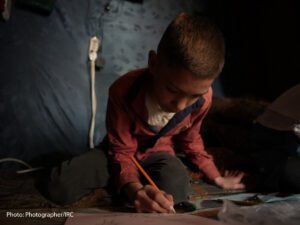 The evaluated program was 11 weeks long, meaning it can be quickly implemented in the months before primary school as a way to quickly increase school readiness skills of those without prior ECE access. The more general approach also allows for adaptations such as longer remote programming spanning the full 3-6 years-old pre-primary age range or hybrid approaches for areas where there is a physical school but where it does not have the capacity to serve all pre-primary age families: a solution that both would address a physical capacity barrier in these areas and align with caregivers’ own recommendations (above).
The evaluated program was 11 weeks long, meaning it can be quickly implemented in the months before primary school as a way to quickly increase school readiness skills of those without prior ECE access. The more general approach also allows for adaptations such as longer remote programming spanning the full 3-6 years-old pre-primary age range or hybrid approaches for areas where there is a physical school but where it does not have the capacity to serve all pre-primary age families: a solution that both would address a physical capacity barrier in these areas and align with caregivers’ own recommendations (above).
Not all areas where in-person ECE is not currently an option for children have the necessary internet connectivity of mobile data options to use platforms like WhatsApp access; the ability to deliver learning kits to enrolled families; available local-language, engaging, educational multimedia content; or other key elements of this particular study. While this suggests a need for further innovations and adaptations by setting, it does not undermine the groundbreaking implications of this program. Remote ECE can work, meaning universal ECE need no longer be only aspirational. With a little creativity, a lot of commitment, sufficient investment, and a focus on maintaining the direct interactions and engagement that make ECE so impactful, this is a finish line we can actually reach.

